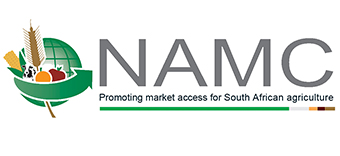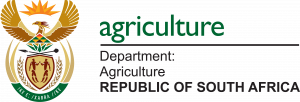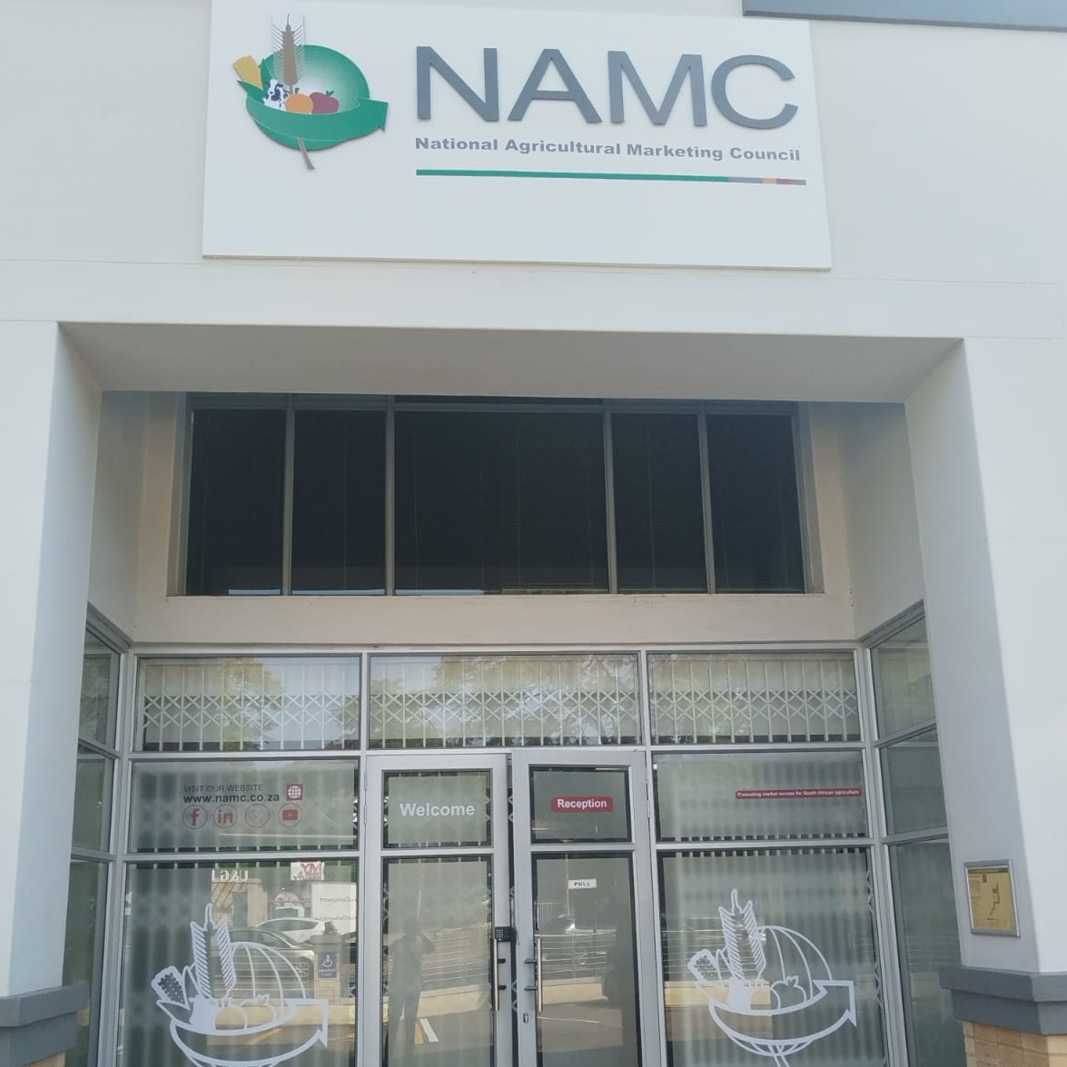CEO’s Desk | At the close of 2020, there’s need to reflect on the agricultural agenda

The year 2020 has no doubt brought the importance of agriculture in the discourse of our country’s economic growth with the positive sector GDP growth and labour numbers (quarter-on-quarter) experienced in the middle of the COVID-19 pandemic.
Partnership for a viable sector
The Board of the National Agricultural Marketing Council (or “Council”) continues to provide oversight on the work of the NAMC to ensure that the Organisation operates in line with its mandate and delivers to its shareholder and stakeholders. At its recent meeting the Council debated the issue of the impact of statutory levies on the agri-food sector at large. A particular discussion also ensued regarding the impact of the 20% of the levies that is set aside for transformation initiatives.
There was general consensus that the totality of the levy funds are meant to make a visible impact on the competitiveness of the sector and also on the issues of inclusivity. Council emphasised the need for a partnership with government and alignment with other government funding sources in order to maximise impact and harvest the potential for improved market access, efficiency and viability of the sector.
Statutory Measures
NAMC management has committed to undertake a comprehensive analysis of the impact of the statutory levy funding on the sector and the economy. A survey will be undertaken to collect primary and secondary data to analyse the impact of transformation funding on beneficiaries. In addition, continues economic analysis will take place to assess economy-wide impact of all levy funding. The NAMC has sent correspondence to the industry organisations that are administering the statutory levies and agricultural industry trusts to requesting historical information on the expenditure on transformation. It is important to note that industries spend over R200 million a year on transformation with a big portion coming from the levies. From anecdotal evidence collected so far through project site visits, it is clear that this transformation expenditure is making a significant contribution in transforming the industry.
As part of ensuring an efficient, viable and inclusive sector, the Minister of Agriculture, Land Reform and Rural Development, Ms Thoko Didiza, recently approved the continuation of statutory measures in the South African olive industry (levies, records & returns and registration) on olive products (including table olives and olive oil) domestically produced and imported, for a new four-year period. These statutory measures were promulgated in the Government Gazette on 20 November 2020. Since 2012 (when the olive statutory levies were introduced for the 1st time) statutory levy rates remained unchanged namely 8c p/kg for table olives (levied on a per kilogram basis) and 40c p/l for olive oil (levied on a per litre basis). The SA olive industry is still in a growth phase and attention is focused on technical research, improving information gathering and distribution, communication with members, the registration of substances, product standards and transformation initiatives. The estimated statutory levy income is approximately R1.8 million per year.
More than half of the local consumption of olive products being imported. A huge challenge for the domestic olive industry is the subsidised olive oil from some European Union countries. Independent research at the retail level shows that brands of Extra Virgin Olive Oil from Spain are selling between 28% and 47% cheaper than local brands. In the case of Italian Extra Virgin Olive Oil, the pattern is similar where imported products are selling between 28% and 51% cheaper than local brands. The South African olive industry is in the process to lobby the DTI to strengthen efforts in assisting the industry to protect local markets.
Agriculture and Agro-processing Master Plan (AAMP)
The Agriculture and Agro-processing Master Plan (AAMP) that is currently in the process of being finalised is seen as a potential platform to coordinate government and non-government initiatives both from a programme as well as from a funding point of view. The AAMP is meant to ultimately become a social compact through which all stakeholders commit to contribute resources and otherwise in a partnership to implement a programme that will result in a more competitive and inclusive sector.
Policy bottlenecks need to be attended to as part of this process. Lack of coordination of efforts between government and non-government players should be a thing of the past. A technical team is busy finalising the draft AAMP document under the coordination of the NAMC. The draft document will serve as a basis for the discussion of commitments and targets by the four social partners namely government, labour, civil society and business. It is contemplated that, following the formal social partner negotiations, the AAMP will be signed off before the end of the current financial year.
Stakeholder relations
The Annual Regional Dialogue of FANRPAN was a great success with the NAMC playing an active role in the organising committee and writing of the resolutions of the dialogue. Also, important to note is the fact that the feedback workshop that was planned had to be postponed due to incidences of COVID-19 infections. The iFEED in country taskforce members held their third meeting and finalised the scenario modelling assumptions document. The University of Leeds is working with the assumptions to model how will climate change affect the agricultural systems in South Africa by 2050.
The NAMC sent correspondences to the industry organisations that are administering the statutory levies and agricultural industry trusts to sort historical information on the expenditure on transformation. It is important to note that industries spend over R200 million a year on transformation with a big portion coming from the levies. This transformation expenditure is making significant ground in transforming the industry. The aim of the historical information is to quantify the effects of industry expenditure on transformation on the conditions on the ground.
Industry transformation
The NAMC Transformation Review Committee (TRC) recently resumed its physical monitoring and evaluation of transformation projects funded by 20% of statutory levies. The TRC along with the Department of Agriculture, Land Reform and Rural Development (Directorate Marketing and AgriBEE Chatter Compliance) conducted site visits to the pomegranate industry transformation project in the Limpopo Province on 27 November 2020. The purpose of the visit was to conduct a Monitoring and Evaluation (M&E) process on the progress of the transformation projects funded through the 20% budget from the Pomegranate association of South Africa (POMASA) annual statutory levy income. One project was visited and the project manager acknowledged an attempt by POMASA to assist with Global GAP certificate. However, the project required numerous assistances with farm infrastructure development and equipment, adding additional 50 ha for pomegranate (10 ha currently under production). It is fortunate that the farmer has access to Pretoria market and Johannesburg Fresh Produce market. It is the NAMC’s opinion that this project has potential to grow and it may require support from both government and commodity industry association through partnership instrument.
The TRC was invited by Potato South Africa to attend the Small grower development programme launch in the Mpumalanga Province on 17 November 2020. Programmes of this kind should be appreciated to contribute to rural communities’ food security. The programme support communities who plant potatoes mainly for food security with the surplus crop sold to the immediate community. The same programme has yielded positive results in other Provinces such as KwaZulu-Natal, Eastern Cape and the Western Cape.
The Minister has appointed the new Ministerial Trustees on the board of the Winter Cereal Trust and Citrus Industry Trust.
On 10 November 2020, these trustees were taken through a comprehensive induction programme comprised of the NAMC as well as the administrators of the respective Trusts. The NAMC continues to play a crucial role in guiding the Trusts as they are regarded as key bodies to drive transformation in the agricultural sector. Through the guidance of the NAMC sitting on the board of trustees on observer status, over the past 5 years the expenditure of the trusts on transformation has increased and the investment on enterprise/ skills development projects is currently worth R400 million. This means collaborations between government and trusts goes a long way in advancing real transformation of the sector.
The NAMC continues to participate in industries engagements that are relating to the transformation of the sector by attending industries transformation committees and making presentations on transformation agenda as and when invited.
Stocks and prices
The month of November witnessed good rains across many areas of the country which bodes well for the summer planting season and food security as the country strive to recovery from the effects of the pandemic.
As of 30 November 2020, the total supply of white maize is projected at 8.894 million tons which equates to a healthy stock level that could cover 61 days. Other grains products such as yellow maize, sorghum, wheat and oilseeds all have relatively good stock levels which are translating to stable prices, good for the upcoming festive seasons. To assess food affordability, the NAMC monitors a food basket cost which contain 28 food items deems necessary to offer a balance and nutritious diet.
The numbers reported in November 2020, which reflect food basket cost measured in October 2020, shows that the NAMC’s 28-item urban food basket amounted to R955.71 compared to the R951.48 reported during September 2020. This resulted in a monthly increase of 0.4%. When compared to October 2019, an annual (y-o-y) increase of 10.3% is observed. Within the NAMC’s 28-item urban food basket, dairy & eggs and bread & cereals price categories were the highest food inflation contributors (y-o-y) with 22.6% and 19.1%, respectively, while tea and coffee prices deflated by 0.2%, during the same period.
Rice, oranges and bananas were among the commodities with the highest annual food inflation which can be attributed to higher global prices for rice due to higher demand associated with fears around a second wave of COVID-19 and restrictions to exports by leading global producers when compared to this time last year. The increase in orange prices can be linked to Covid-19 which resulted in a higher demand for fruit, especially fruit with Vitamin C, which resulted in higher global prices, higher quantities exported and lower supply to the local market while local demand also remains high, the same trend was observed during September 2020.
On behalf of the NAMC, we wish all our stakeholders a happy festive season and prosperous new year.


